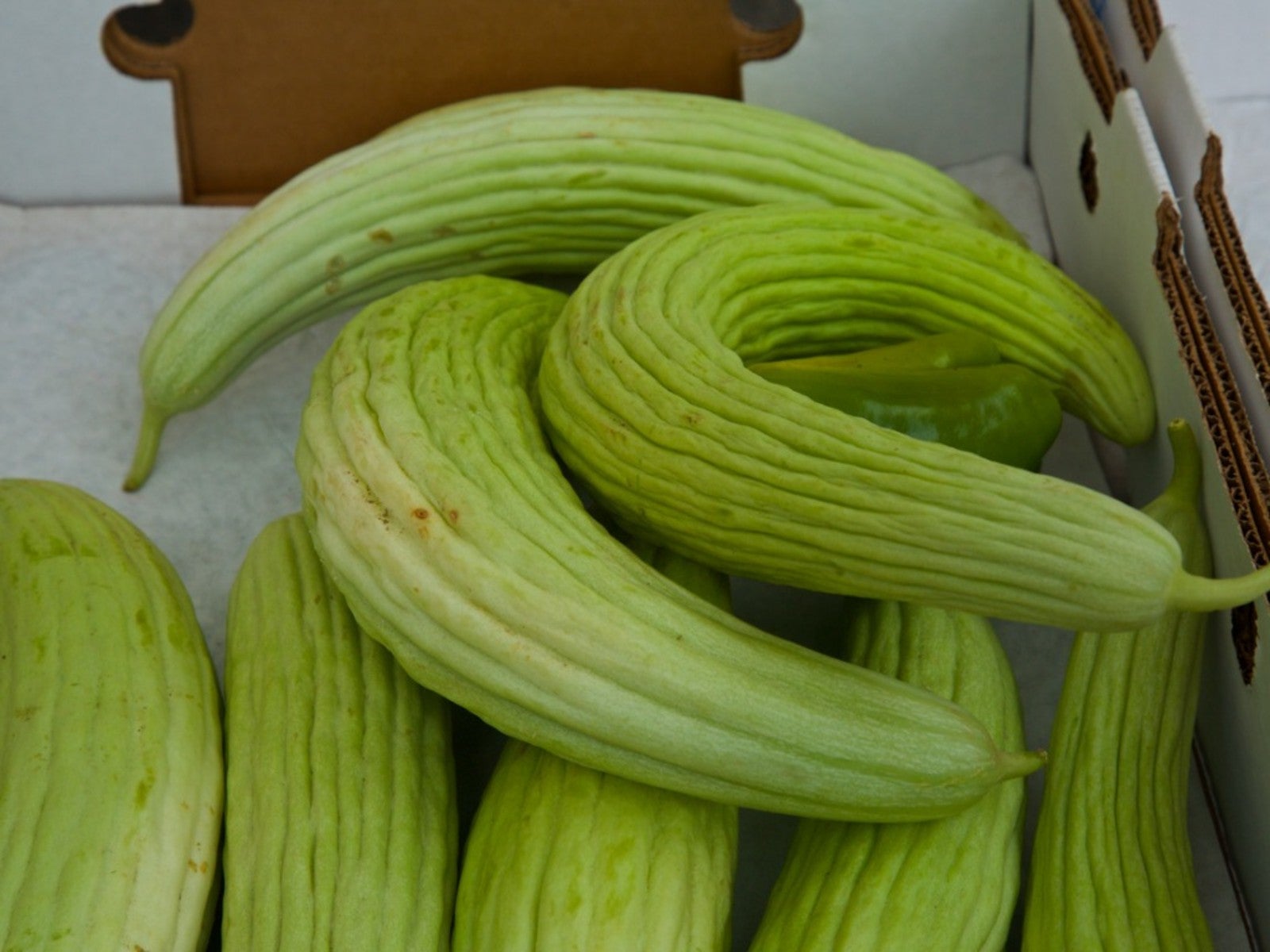Armenian Cucumber Plant Info – Growing Armenian Cucumbers


If it looks like a cucumber and mostly tastes like one, is it a cucumber? Armenian cucumber plants are in the same genus as cucumbers but belong to a separate species more closely related to muskmelons. That basically makes them Armenian cucumber melons. If that is confusing, keep reading for information on these unique melons.
Modern gardeners are getting access to all kinds of interesting crops. Crops from around the world allow us to expand our palettes and give us an opportunity to grow something new. Armenian cucumbers are just one such crop. The melon has many of the characteristics of a cucumber but can also be used in sweet dishes.
What are Armenian Cucumber Plants?
Armenian cucumber melons look much like a cucumber, only often bent rather than straight. They have thin skin, soft flesh and a line of small seeds which can be easily removed if you wish. The fruits are gently ribbed. They start out a lush green and turn yellow when ripe. The flavor is lightly sweet and refreshing.
The plants grow as annual vines which need training vertically. The stems are angular and decorated with fine hairs. Both male and female small, yellow blooms are produced. The leaves are almost grape-like and profuse. This muskmelon relative is lovely sliced into salad or pickled.
Tips on Growing Armenian Cucumbers
Armenian cucumbers prefer a long, hot summer. Temperatures for germination need to be above 50 degrees Fahrenheit (10 C). The plants need at least 55 frost free days to produce fruit. Plant the seeds at 1/2 inch depth (1.27 cm.) in rich, well worked soil. Expect germination in 7 to 20 days. Once your seedlings emerge, set up a trellis or stakes for the tendrils on the vines to begin to grasp. As the plant seeks light it will begin to train itself up the structure, although you may have to help a bit. Side dress these plants with well rotted manure or compost.
Armenian Cucumber Care
In the right conditions, Armenian cucumber care is effortless. Like cucumbers and most melons, the plants need consistent moisture, especially once they start fruiting. Avoid overhead watering which can cause powdery and downy mildew.
The same pests that occur with cucumbers and melons like cantaloupe may be of concern. Pick Armenian cucumbers in the morning and pick them often. The larger fruits do not have a pleasant taste and the seeds are hard. Pick fruits when they are 12-18 inches (30.48-45.72 cm.) long. Refrigerate them until use. This is a unique summer fruit that will add flavor and interest to your summer concoctions.
Sign up for the Gardening Know How newsletter today and receive a free copy of our e-book "How to Grow Delicious Tomatoes".
Since you’ve worked so hard in the garden this summer we want to show off the fruits (and veggies) of your labor! We invite you to join the Gardening Know How Virtual Harvest Show by submitting photos of your harvest!

Bonnie Grant is a professional landscaper with a Certification in Urban Gardening. She has been gardening and writing for 15 years. A former professional chef, she has a passion for edible landscaping.